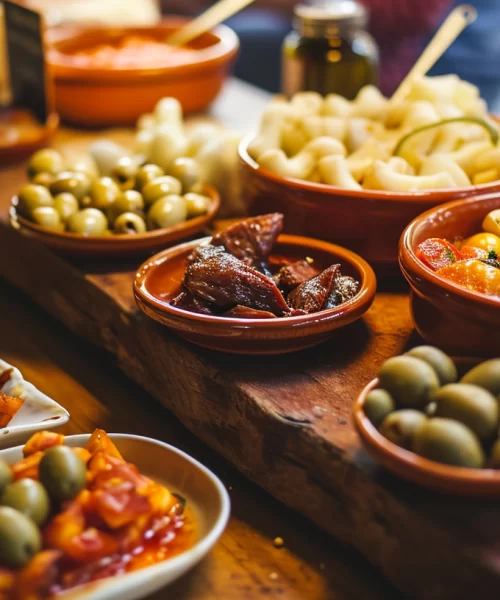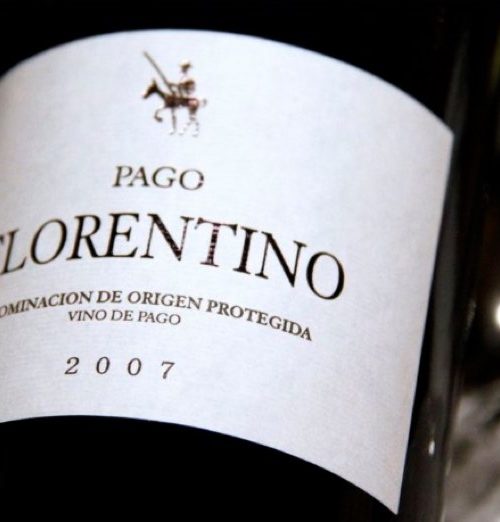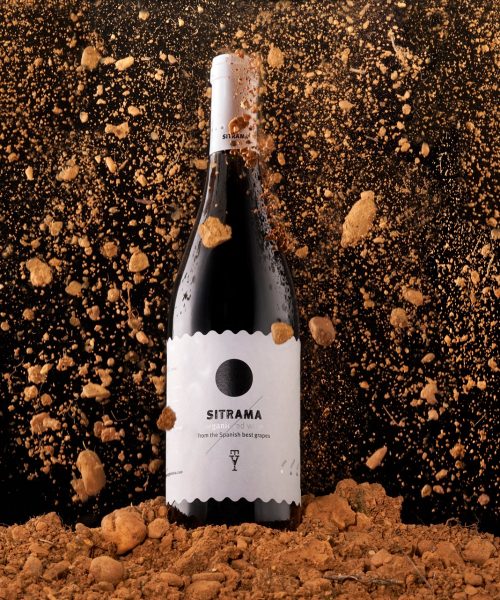Plenty of sun, the salt from the wide sea on your lips and a bright blue sky as far as the eye can see. Spain is well known for its holiday qualities and is extremely popular as a travel destination. The only thing missing is a visit to the tapas bar, lively music that invites you to move and dream, delicious snacks made from meat, fish and fresh vegetables, and a light white wine: the paradisiacal summer day is perfect, just like out of a picture book.
Spain’s wines impress with temperament and liveliness. Of the more than 250 different grape varieties that exist in this country, most are red. It is not for nothing that the country is known as a red wine specialist. However, the more than thirty types of white grapes take up at least 50% of the cultivated area under vines. This makes Spain the largest white wine producer in the world. We have put together a composition of eight selected grape varieties and their wine creations for you. Let yourself be inspired and maybe one or the other description will tempt you to try it.
Probably the best-known grape variety for white wine in the northern Spanish wine region of Rías Baixas in Galicia is the Albariño. It is cultivated in a pergola-like manner, supported by pillars, due to the high humidity of the soil in this region. Its fine acidity makes it a good partner for all dishes that come from the sea. The wine is preferably drunk young, without prolonged storage.
The late-ripening Loureira grape (Loureiro grape variety) produces aromatic, powerful wines, both tasting and smelling of laurel, with aromas of apple or orange. The high-yielding vines of this variety can be found in the growing regions of Rías Baixas, Ribeiro and Ribeira Sacra. The grapes are either pressed as a single variety or often blended with the Tradjadura. Because of its elegance and fruity aromas, the wine is an excellent prelude to successful receptions and celebrations.
Garnacha, also called Grenache outside of Spain, is usually a vine for red wine. However, there is also a white version, the Garnacha blanca. The white grape variety is popular because of its low acidity and pleasant fruitiness for so-called blend wines, i.e. mixtures of different grape varieties. The grape can cope well with drought and heat, but then delivers lower yields that are more alcoholic. Enjoy this wine as a Spanish Rioja variant or as a Navarra or Tarragona.
Although the Gewürztraminer vine tends to come from other Central European countries such as Germany, Austria and Italy, it has now also found its way into Spain. The soft pink grape with the strong sugar content is grown, for example, in the Costers del Segre or Somontano regions. The typically spicy aroma of dry and semi-dry white wines is paired with a low degree of acidity and tropical fruit notes ranging from mango to lychee.
It almost became extinct, the Godello grape native to Galicia. In the 1970s there were only a frighteningly small number of vines of this variety left. It is all the more gratifying that today they are again increasingly active in the D.O. area. Valdeorras and Bierzo is grown and cultivated. The pronounced acidic character of Godello offers a good basis for fruity, fresh cuvée wines reminiscent of apples or apricots. The alcohol content, on the other hand, is rather low, so that the straw-colored drop is ideal for noble culinary delights.
Verdejo is considered one of the best grapes for Spain’s white wines. It is used to create characterful, spicy wines with a clear bouquet. Aromas such as grass, apple or, very delicately, anise play a major role in the dry, strong wines made from the Verdejo grape. The sometimes bitter taste subsides in the finish and provides a solid basis for Sherry-like wines, which used to be mostly made from this grape variety. Today they are either drunk young, but with excellent quality they can also be stored for a long time. The largest occurrences of the grape variety are in the Castilian wine-growing regions D.O. Rueda, Toro and Tierras de Léon and Cigales.
The whitish-grey berry of the Cayetana Blance is a noble vine that is cultivated in the cultivation area of the southwestern Spanish region of Extremadura. The vines of this variety can be found mainly around Badajoz and Cáceres, occasionally also in the Rioja region. The grape is very productive, it produces dry white wines with little acidity and alcohol and a rather neutral character. Due to its properties, it is preferably used for the production of brandy.
Last but not least, we will introduce you to the most commonly cultivated white wine vine in northern Spain – the Macabeo or Viura. It can be found in Tarragona as well as in Valencia, Jumilla or La Mancha. Drought and oxidation cannot harm this robust and late-ripening grape variety, but it is very susceptible to fungal spores. Harvested early, the grape serves as the basis for the well-known sparkling wine Cava as well as for fresh, low-alcohol white wines. A late harvest, on the other hand, produces less floral, but characterful wines with little acidity and a high alcohol content. The color of the wine then varies from light yellow to golden or even amber.
These were just a few of the many white wine grapes grown in Spain’s beautiful countryside. We hope we were able to provide you as a wine lover with a few suggestions and have made you curious about the whites in the red wine country.




